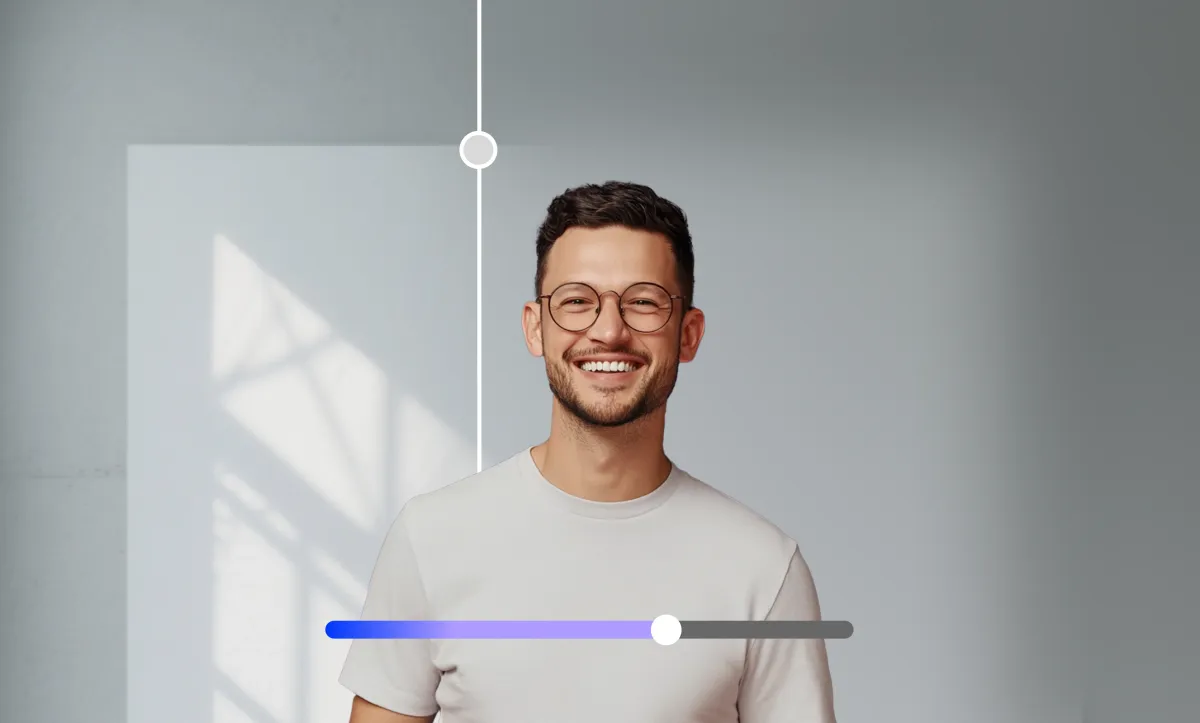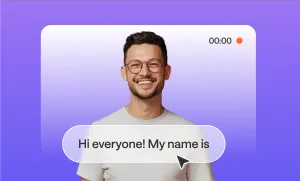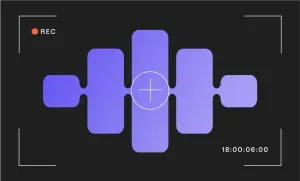Blurring the background of a video might sound like a small visual tweak, but when used well, it creates separation between the subject and everything else in frame, helping viewers focus on what matters, even if the space behind them is chaotic, distracting, or just plain boring.
That’s where Podcastle comes in. Our Video Editor has a built-in AI assistant that can blur your video’s background with a few clicks.
Here’s exactly how to do it.
How to Blur Background on Video in 3 Steps
With Podcastle's cinematic blur, all you need to do is record or upload your footage onto our Video Editor, click one button, and wait for your video background to blur in just a couple minutes.
Step 1: Upload your video

Open Podcastle’s Video Editor, then drag in your footage or hit the upload button to select your video file. Once it’s in, you’ll see the timeline, your media, and a few tools along the top of the editor.
Step 2: Click on the AI Assistant and select “Cinematic Blur”
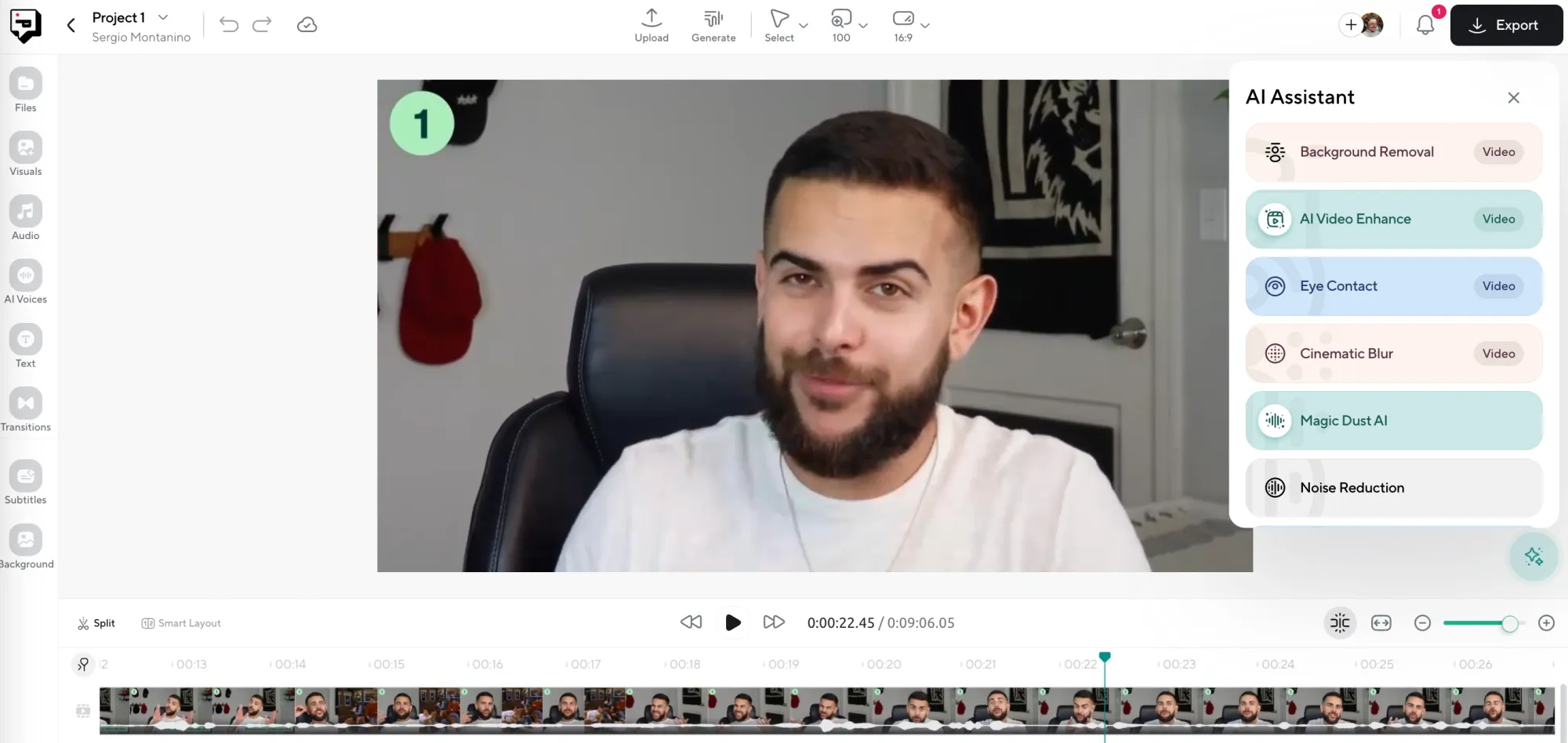
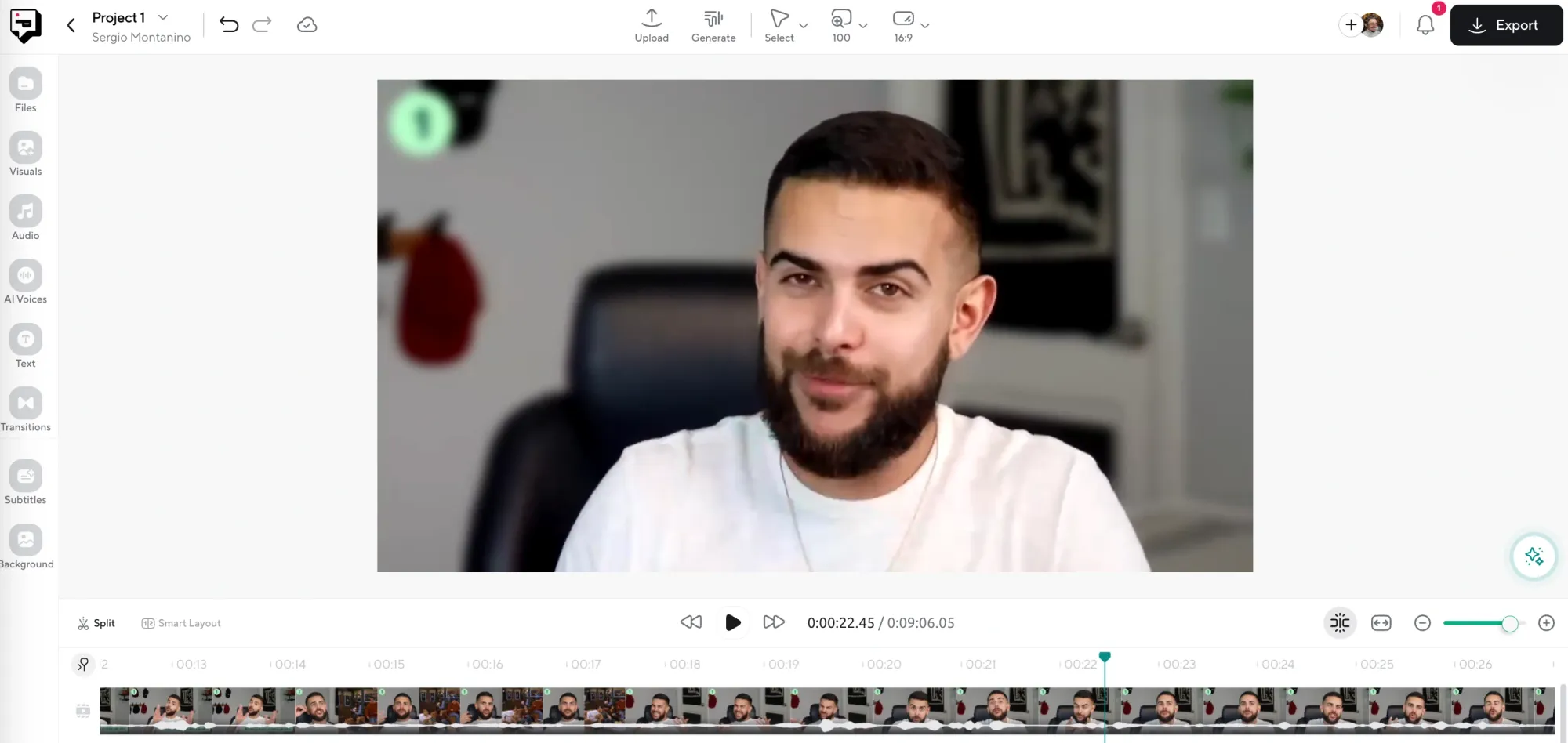
In the toolbar, click the AI Assistant button. From there, choose Blur Background and let the system process your video. This only takes a few seconds, and you’ll immediately see the blur applied in the preview window.
Step 3: Make any final edits you want and export
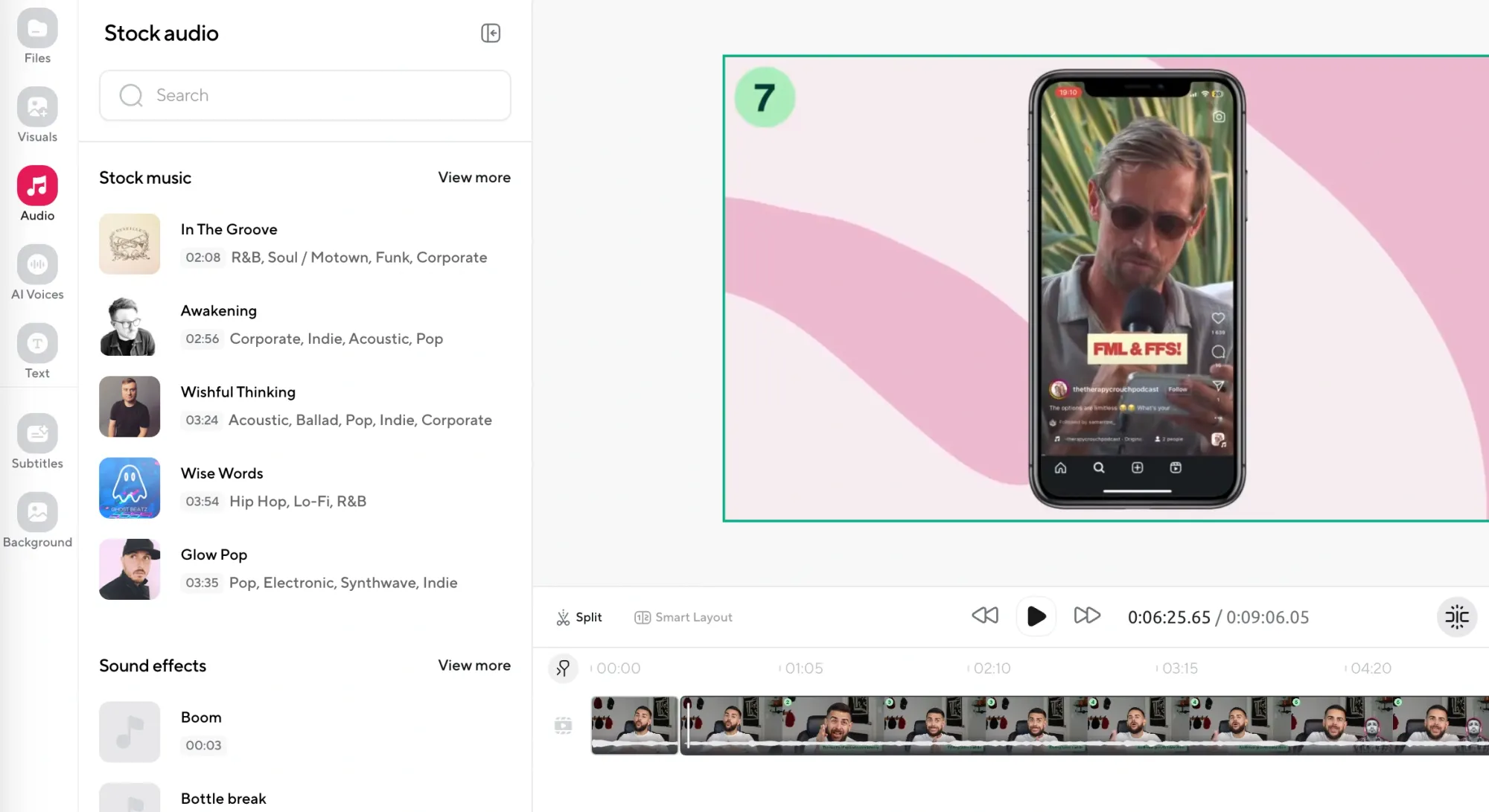
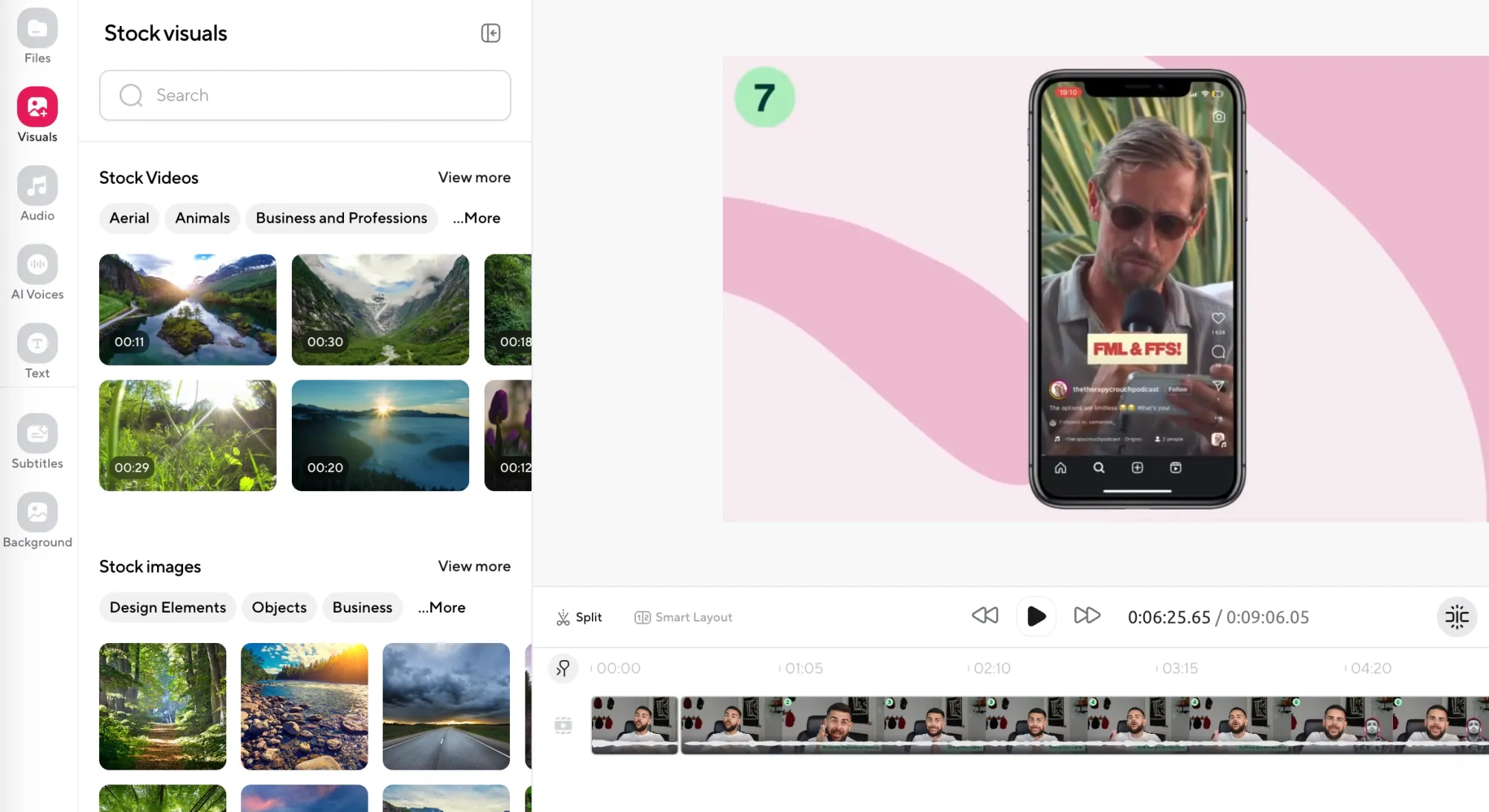
Now’s your chance to take it further. You can change the background altogether, add music, bring in an AI voiceover, trim your clip, or apply visual enhancements like Smart Layouts or filters. When you’re happy with how it looks and sounds, click Export and choose your format.
Five Quick Troubleshooting Tips
- If the video blur looks weird, try adjusting the light: AI-based background blur works best when your face is clearly lit and separated from the background. A desk lamp or natural light source behind your screen can make a big difference.
- Avoid fast movement in low-quality video footage. If your video is grainy and your head moves quickly, the blur might struggle to track you cleanly. In those cases, try slowing the clip down slightly or keeping edits minimal.
- Combine video blur with a subtle music track. Sometimes, blur alone can feel artificial. Pairing it with quiet background music adds balance and distracts from any awkward visual transitions.
- Try replacing the background if the video blur isn’t enough. If you’re still not happy with how your space looks, swap it entirely. Podcastle lets you change your background with a still image or video, and it often works better than blur for content where the vibe really matters.
- Don’t export too early, preview everything first. Blur effects can look fine at first but glitch during fast scenes or cuts. Always hit play on your full timeline and check your transitions before exporting.
Why Background Blur Actually Matters
The goal of background blur isn’t just to hide clutter. It’s to draw attention. When your subject is sharp and the rest fades out gently, it feels more cinematic. There’s a subtle professionalism to it, the kind people associate with documentaries, interviews, and polished talking-head content.
That said, clean footage isn’t the only kind that works. Sometimes, lower-quality video has its own appeal. Think about TikToks filmed in bad lighting, screen-recorded memes (or memes in general), and old viral clips from Vine. In those cases, blur can still be helpful, but not exactly necessary or beneficial.
When Should You Blur the Background?
Blurring the background can be incredibly helpful, but it isn’t always the right move. The best content creators know when to use it and when to let their background tell part of the story.
If you’re filming a how-to tutorial, a voiceover with your face on screen, or a piece of branded content that needs to feel clean and distraction-free, adding blur can elevate the focus and give your video a subtle layer of polish. It’s an easy way to make your video feel more professional without having to actually clean the room or buy a new camera.
But there are plenty of moments where blur can work against you. If your background gives viewers valuable context, like a travel vlog, a studio tour, or even just a bookshelf filled with your favorite things, removing those details can make the video feel empty.
Some audiences also connect more deeply when they feel like they’re in your space with you, and blur can sometimes make that connection feel distant. So before you apply it, take a second to ask: Is this background adding something? If it is, you might want to keep it sharp.
Best Reasons to Blur the Background of a Video
Blurring the background isn’t something you do just to make a video look nicer. It solves real problems. And depending on what kind of content you’re making or where you’re filming, it can take your video from feeling cluttered or distracting to something that feels more focused and watchable.
Below are a few of the most common situations where using background blur can really help as a simple fix that lets the viewer pay attention to what matters.
1. Filming in a cluttered space and don’t have time to fix it
There’s nothing wrong with filming in your bedroom, but if there’s laundry on the bed, a snack wrapper on your desk, and cords running everywhere, blur helps. It doesn’t solve the mess, but it removes it from the viewer’s focus so they can stay locked in on you.
2. Focusing attention on a product or object you’re holding
If you’re reviewing something or showcasing a product in your hands, a blurred background can help it pop. The viewer’s eyes will naturally follow what’s in focus, which can make the item feel more prominent and important.
3. Shooting in public and want some privacy
Maybe you’re filming in a café, a co-working space, or a shared room. Blur helps reduce the visual noise of people moving in the background and protects the identities of strangers who didn’t sign up to be on camera.
4. Trying to create a more serious or intimate tone
Background blur softens the visual field and can make your message feel more focused or heartfelt. This works especially well for personal updates, mental health content, or sensitive topics where you want the viewer to stay connected to your face.
5. Using a webcam or low-quality camera
Ironically, a blur can make your video feel higher in quality. By separating you from the background, the viewer pays more attention to you and less attention to the limitations of your camera. It’s a quick way to upgrade your footage without changing gear.
Final Thoughts
There’s a reason background blur has become such a go-to tool for so many creators, and it has nothing to do with chasing trends or trying to make things look overly polished. It’s about making small adjustments that help people stay focused on what matters in your video, especially when your space isn’t camera-ready or you’re working with limited gear.
But even though it’s easy to apply, blur isn’t something to use on autopilot. The more time you spend thinking about why you’re using it and what kind of feeling you want to create, the more natural and intentional your edits will feel. Sometimes, your background adds something real that your viewers connect with, and other times, it just gets in the way. Knowing the difference is what separates a video that’s passable from one that holds attention all the way through.
So use blur when you need it. Use it when you’re in a tight spot, when your space feels chaotic, or when you want the focus to stay right where it belongs.
